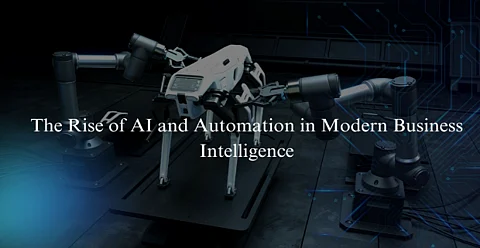

The work of Ravi Teja Gurram delves into the transformative role of artificial intelligence (AI) and automation in reshaping business intelligence (BI) systems. By focusing on innovative frameworks and strategies, his insights highlight how businesses are evolving to meet the demands of a data-driven world.
The journey of business intelligence has moved from static reporting systems to dynamic, AI-driven platforms. Older systems, which often took days to process and generate insights, have now been replaced by solutions capable of analyzing data in real time. Modern BI platforms leverage AI to process vast amounts of data with speed and precision, enabling businesses to make decisions faster and more effectively.
These advancements also reduced the times taken for the response and substantially improved the insights' accuracy. For instance, companies that are using AI-based BI saw an improvement of accuracy by 50% and swift adaptation to new market trends. All these can ultimately help organizations improve their positions amidst competitive changes that characterize business situations.
A key innovation in modern BI is the integration framework that seamlessly connects various data sources. Today’s systems can process over 100,000 data points per minute, ensuring high performance without compromising data security. The adoption of event-driven architectures and real-time analytics has been a game-changer, allowing businesses to achieve sub-second response times for critical queries.
The inclusion of edge computing—processing data closer to its source—has further streamlined operations. By reducing central data loads by up to 60%, edge analytics ensures that businesses can scale efficiently while maintaining data accuracy rates of over 99%.
AI has fundamentally altered the way organizations approach data analysis. Machine learning algorithms now allow systems to recognize patterns, identify anomalies, and predict future trends with remarkable accuracy. For instance, advanced predictive models have reduced forecasting errors by 45% and given businesses a clearer view of risks and opportunities.
These tools also make the decision-making process better with the integration of real-time data with historical insights. Businesses can now respond with much more confidence and speed to any potential issues or market changes, making predictive analytics the bedrock of modern BI.
Automation has transformed the ways of handling complicated data sets within a business organization. Modern systems can automate activities like data validation, integration, and error correction. This helps minimize manual interventions significantly. As reported by many organizations, this has reduced processing times for data to as short as 85%, thus also making it fast and reliable.
Moreover, through AI-driven systems, data from diverse sources is allowed to get integrated accurately, with an integrity ratio that is above 99%. Validation frameworks on real-time operation keep following the real-time quality of data, thus lowering error occurrence and faster resolution for whatever issue arises.
Now, powerful tools such as NLP and advanced visualization techniques have been incorporated into DSS. These innovations allow businesses to interpret data in the form of unstructured customer feedback or market sentiment at more than 90% accuracy. Interactive dashboards with updated information in real-time help stakeholders analyze these complex data sets, promoting faster and more knowledgeable decisions.
Furthermore, simulation frameworks and optimization algorithms have enhanced predictive capabilities. Businesses can now evaluate multiple scenarios simultaneously, thereby enhancing their ability to manage risks and allocate resources effectively.
Just the right planning and robust strategies lead to successful adoption of these advanced technologies. Scalable architectures that handle exponential growth are one of the things that actually help in gearing up businesses to future-proof their systems. Encryption and multi-factor authentication ensure data remains protected, but at no cost to accessibility.
Incentives for the training and management of change processes are equal in importance. Improved productivity by 65% results from comprehensive programs that combine structured learning with actual practice. Users' adoption is maximized once businesses focus more on user adoption and engagement.
Business intelligence will keep improving as AI keeps evolving. Other technologies that have the potential to enhance the process of making decisions in real time include unsupervised learning and edge computing. In some fields, like health care and finance, this will bring actual, concrete results- better diagnostics, more efficient fraud detection.
This brings about enormous investment returns. According to studies on the next generation of BI system implementations, next-generation BI businesses that were well-implemented witnessed a 400% plus in ROI improvements in operational and strategic gains.
In conclusion, the insights offered by Ravi Teja Gurram highlight that modern BI depends much on AI and automation technologies for its growth. With adoption of these, organizations can unlock entirely new levels of efficiency, accuracy, and agility in the processes, thus his work acting as the guiding framework in which businesses look for full potential harvesting from their data in an increasingly complex and competitive landscape.
